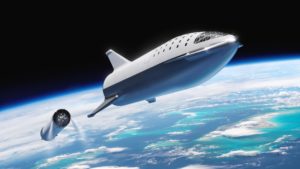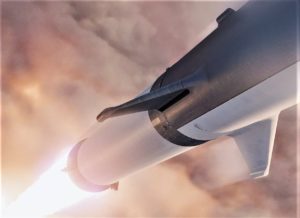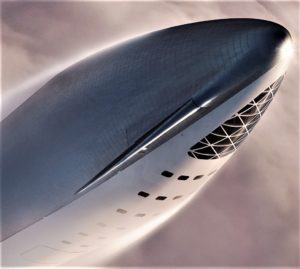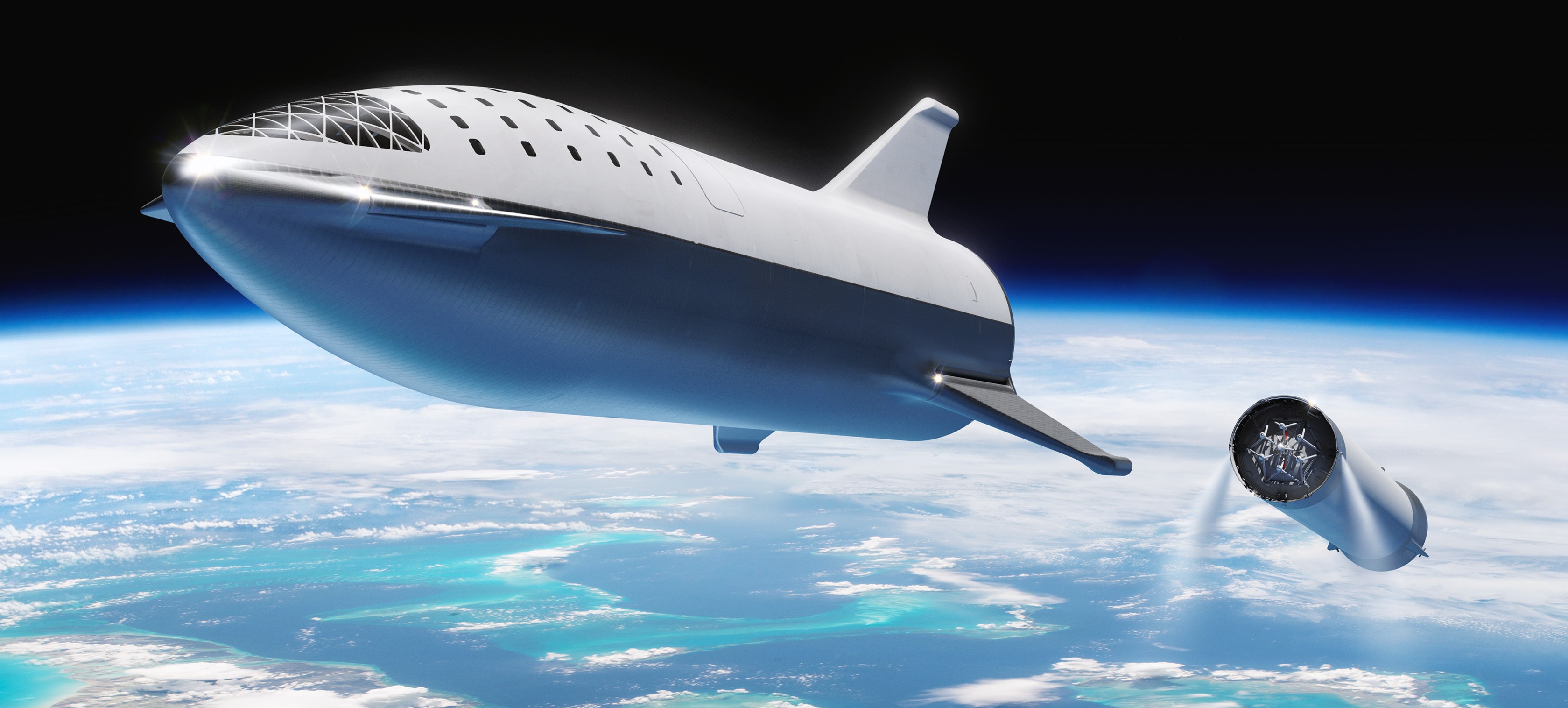

SpaceX
SpaceX to build small version of BFR’s spaceship for use on Falcon 9, says Elon Musk
SpaceX CEO Elon Musk has taken to Twitter to announce a new development program: in order to gain experience with the new design and recovery strategy, SpaceX engineers and technicians will apparently build a miniature version of BFR’s winged spaceship able to launch atop Falcon 9 or Falcon Heavy.
According to Musk, the company aims to conduct the first orbital flight of this mini-BFS as early as June 2019, just eight months away.
Mod to SpaceX tech tree build: Falcon 9 second stage will be upgraded to be like a mini-BFR Ship
— Elon Musk (@elonmusk) November 7, 2018
Described as a “SpaceX tech tree build”, Musk seems to be implying that the strategic purpose of this new development is to act as a stepping stone between Falcon 9 and BFR, two dramatically different launch vehicles relying on a variety of entirely distinct technologies. Based on the fact that Musk believes the mini-BFS could reach orbit as early as June 2019, it seems likely that the miniature spaceship will essentially just be a strengthened Falcon 9 upper stage with fins and a heat shield attached versus a more extreme departure, where the stage would literally be a mini-BFS.
In the latter scenario, SpaceX could use the opportunity to extensively test – albeit on a smaller scale – a number of immature BFR technologies, including all-composite propellant tanks, autogenous pressurization, a sea level-optimized rocket engine on an orbital upper stage, methane and oxygen (methalox) propellant, actuatable tripod fins, new heat shield materials, and more. If SpaceX has been working on this for several months, there is still a chance that those technologies will be tested on this step-change Falcon 9 S2 variant, but it seems improbable that Musk would have been able to stay totally silent on the plans during his September 2018 update to the BFR program.
- BFR’s spaceship and booster (now Starship and Super Heavy) separate in a mid-2018 render of the vehicle. (SpaceX)
- A detailed view of BFR’s booster interstage, apparent lack of grid fins, RCS pod nubs, and more. (SpaceX)
- A closeup of BFS’ nose section, featuring impressively varied tile-sizes, joining methods, and extremely precise curves on the interface between canard wings and the hull. (SpaceX)
Falcon 9 upper-stage recovery
Going off of what little information we have, it seems more likely that the “mini-BFR ship” described by Musk is an effort to realize Falcon 9 upper stage recovery and test BFR’s orbital spaceship recovery strategies than it is an extensive development platform for all critical BFR technologies. Prior to today’s tweet, Musk announced early this year (April, to be precise) that SpaceX would attempt to recovery Falcon 9’s upper stage with a “giant…balloon”, or an inflatable decelerator to use the technical terminology.
SpaceX will try to bring rocket upper stage back from orbital velocity using a giant party balloon
— Elon Musk (@elonmusk) April 15, 2018
Given this new development, it’s unclear if those plans are still on – as a small spaceship, Falcon 9’s upper stage would likely be able to reenter Earth’s atmosphere without the need for something like a single-use inflatable decelerator, which would have always been a suboptimal crutch for the recovery of any orbital spacecraft, be it Falcon 9 or BFR. With this new plan, it appears that SpaceX wants to kill at least two birds with one stone, building a platform capable of flight-testing a handful of new technologies critical to BFR’s success while also potentially realizing the dream of a fully-reusable Falcon 9.
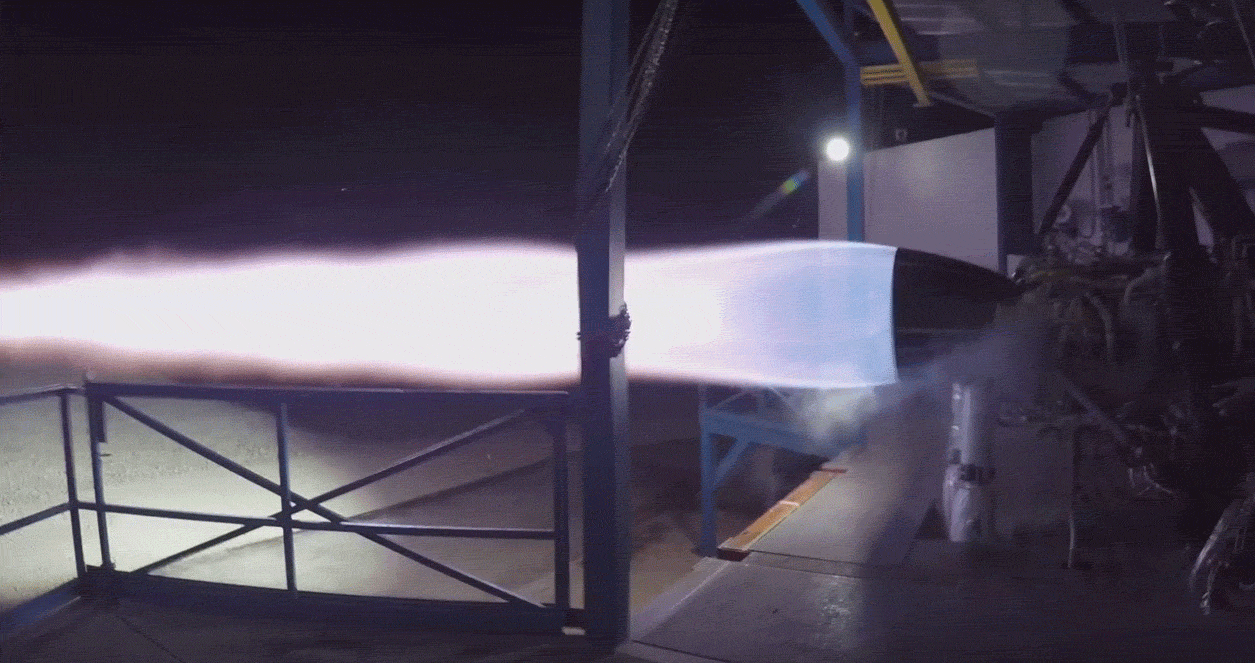
Given recent reports from Reuters that Musk has demanded that SpaceX’s Starlink team work towards the first launch of an operational batch of satellites by mid-2019, his target date for a mini-BFS Falcon 9 upper stage is likely no coincidence. Given the potential risk of being the first to launch on an unproven variant of Falcon 9, it’s possible (if not probable) that SpaceX will conduct its own launch of the rocket prior to flying paying customers – a perfect way to avoid wasting that launch would be risking a few of SpaceX’s own Starlink satellites in place of a customer’s payload.
Won’t land propulsively for those reasons. Ultra light heat shield & high Mach control surfaces are what we can’t test well without orbital entry. I think we have a handle on propulsive landings.
— Elon Musk (@elonmusk) November 7, 2018
Musk seems to be confident that SpaceX has effectively ‘solved’ propulsive rocket landings, stating that the purpose of this new variant will be dedicated to testing an “ultra light heat shield and high Mach control surfaces”. Judging from a number of recent job postings focused on new thermal protection systems (and affixing them to composite structures) and an official request for information (RFI) from NASA Ames about its lightweight TUFROC heat shield material, this is a major focus and one of several critical paths for BFR development.
For prompt updates, on-the-ground perspectives, and unique glimpses of SpaceX’s rocket recovery fleet check out our brand new LaunchPad and LandingZone newsletters!
News
SpaceX launches Ax-4 mission to the ISS with international crew
The SpaceX Falcon 9 launched Axiom’s Ax-4 mission to ISS. Ax-4 crew will conduct 60+ science experiments during a 14-day stay on the ISS.
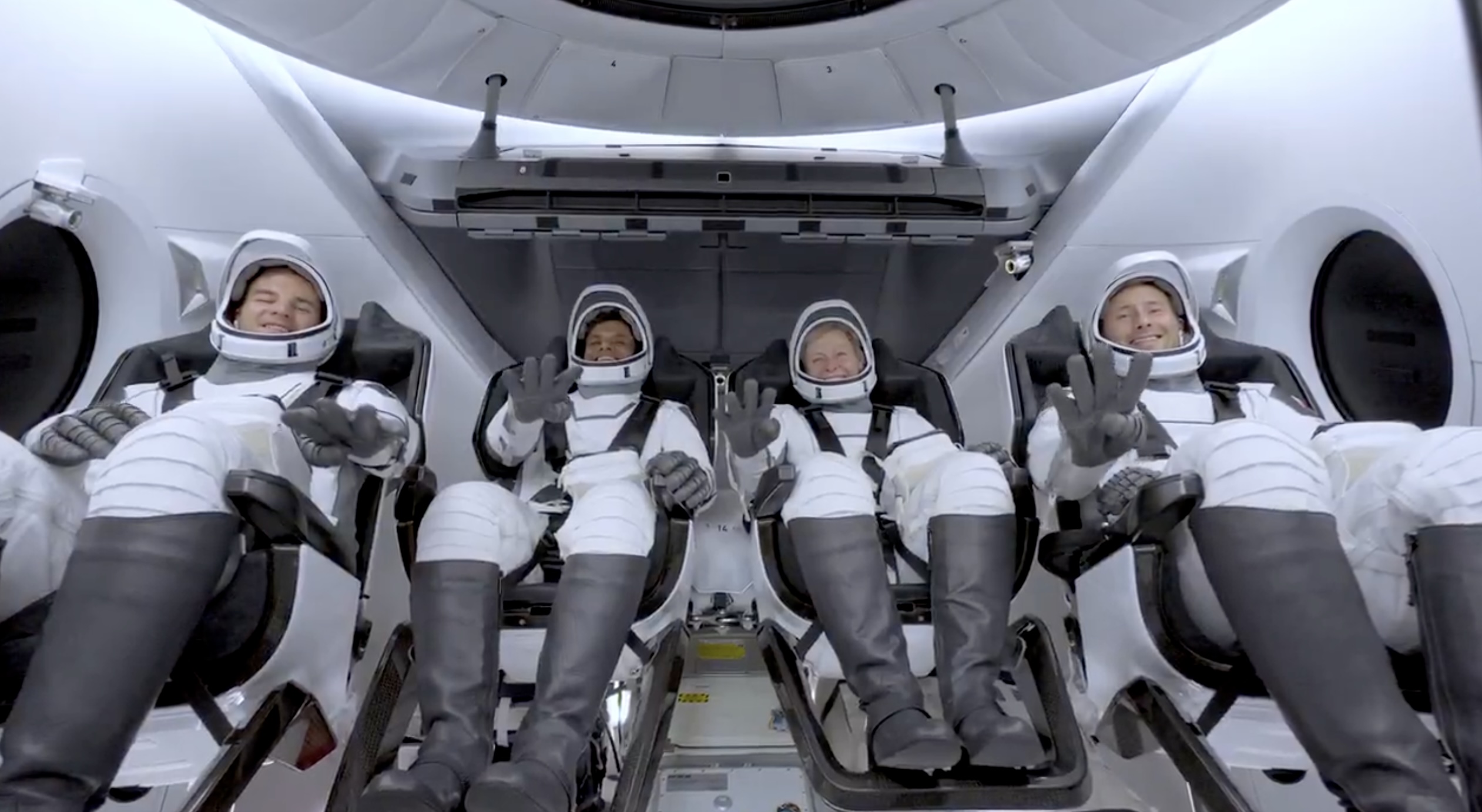
SpaceX launched the Falcon 9 rocket kickstarting Axiom Space’s Ax-4 mission to the International Space Station (ISS). Axiom’s Ax-4 mission is led by a historic international crew and lifted off from Kennedy Space Center’s Launch Complex 39A at 2:31 a.m. ET on June 25, 2025.
The Ax-4 crew is set to dock with the ISS around 7 a.m. ET on Thursday, June 26, 2025. Axiom Space, a Houston-based commercial space company, coordinated the mission with SpaceX for transportation and NASA for ISS access, with support from the European Space Agency and the astronauts’ governments.
The Ax-4 mission marks a milestone in global space collaboration. The Ax-4 crew, commanded by U.S. astronaut Peggy Whitson, includes Shubhanshu Shukla from India as the pilot, alongside mission specialists Sławosz Uznański-Wiśniewski from Poland and Tibor Kapu from Hungary.
“The trip marks the return to human spaceflight for those countries — their first government-sponsored flights in more than 40 years,” Axiom noted.
Shukla’s participation aligns with India’s Gaganyaan program planned for 2027. He is the first Indian astronaut to visit the ISS since Rakesh Sharma in 1984.
Axiom’s Ax-4 mission marks SpaceX’s 18th human spaceflight. The mission employs a Crew Dragon capsule atop a Falcon 9 rocket, designed with a launch escape system and “two-fault tolerant” for enhanced safety. The Axiom mission faced a few delays due to weather, a Falcon 9 leak, and an ISS Zvezda module leak investigation by NASA and Roscosmos before the recent successful launch.
As the crew prepares to execute its scientific objectives, SpaceX’s Ax-4 mission paves the way for a new era of inclusive space research, inspiring future generations and solidifying collaborative ties in the cosmos. During the Ax-4 crew’s 14-day stay in the ISS, the astronauts will conduct nearly 60 experiments.
“We’ll be conducting research that spans biology, material, and physical sciences as well as technology demonstrations,” said Whitson. “We’ll also be engaging with students around the world, sharing our experience and inspiring the next generation of explorers.”
SpaceX’s Ax-4 mission highlights Axiom’s role in advancing commercial spaceflight and fostering international partnerships. The mission strengthens global space exploration efforts by enabling historic spaceflight returns for India, Poland, and Hungary.
News
Starlink Cellular’s T-Mobile service to grow with third-party app data
From Oct 2025, T-Satellite will enable third-party apps in dead zones! WhatsApp, X, AccuWeather + more coming soon.

Starlink Cellular’s T-Mobile service will expand with third-party app data support starting in October, enhancing connectivity in cellular dead zones.
T-Mobile’s T-Satellite, supported by Starlink, launches officially on July 23. Following its launch, T-Mobile’s Starlink Cellular service will enable data access for third-party apps like WhatsApp, X, Google, Apple, AccuWeather, and AllTrails on October 1, 2025.
T-Mobile’s Starlink Cellular is currently in free beta. T-Satellite will add MMS support for Android phones on July 23, with iPhone support to follow. MMS support allows users to send images and audio clips alongside texts. By October, T-Mobile will extend emergency texting to all mobile users with compatible phones, beyond just T-Mobile customers, building on its existing 911 texting capability. The carrier also provides developer tools to help app makers integrate their software with T-Satellite’s data service, with plans to grow the supported app list.
T-Mobile announced these updates during an event celebrating an Ookla award naming it the best U.S. phone network, a remarkable turnaround from its last-place ranking a decade ago.
“We not only dream about going from worst to best, we actually do it. We’re a good two years ahead of Verizon and AT&T, and I believe that lead is going to grow,” said T-Mobile’s Chief Operating Officer Srini Gopalan.
T-Mobile unveiled two promotions for its Starlink Cellular services to attract new subscribers. A free DoorDash DashPass membership, valued at $10/month, will be included with popular plans like Experience Beyond and Experience More, offering reduced delivery and service fees. Meanwhile, the Easy Upgrade promotion targets Verizon customers by paying off their phone balances and providing flagship devices like the iPhone 16, Galaxy S25, or Pixel 9.
T-Mobile’s collaboration with SpaceX’s Starlink Cellular leverages orbiting satellites to deliver connectivity where traditional networks fail, particularly in remote areas. Supporting third-party apps underscores T-Mobile’s commitment to enhancing user experiences through innovative partnerships. As T-Satellite’s capabilities grow, including broader app integration and emergency access, T-Mobile is poised to strengthen its lead in the U.S. wireless market.
By combining Starlink’s satellite technology with strategic promotions, T-Mobile is redefining mobile connectivity. The upcoming third-party app data support and official T-Satellite launch mark a significant step toward seamless communication, positioning T-Mobile as a trailblazer in next-generation wireless services.
News
Starlink expansion into Vietnam targets the healthcare sector
Starlink aims to deliver reliable internet to Vietnam’s remote clinics, enabling telehealth and data sharing.

SpaceX’s Starlink expansion into Vietnam targets its healthcare sector. Through Starlink, SpaceX seeks to drive digital transformation in Vietnam.
On June 18, a SpaceX delegation met with Vietnam’s Ministry of Health (MoH) in Hanoi. SpaceX’s delegation was led by Andrew Matlock, Director of Enterprise Sales, and the discussions focused on enhancing connectivity for hospitals and clinics in Vietnam’s remote areas.
Deputy Minister of Health (MoH) Tran Van Thuan emphasized collaboration between SpaceX and Vietnam. Tran stated: “SpaceX should cooperate with the MoH to ensure all hospitals and clinics in remote areas are connected to the StarLink satellite system and share information, plans, and the issues discussed by members of the MoH. The ministry is also ready to provide information and send staff to work with the corporation.”
The MoH assigned its Department of Science, Technology, and Training to work with SpaceX. Starlink Vietnam will also receive support from Vietnam’s Department of International Cooperation. Starlink Vietnam’s agenda includes improving internet connectivity for remote healthcare facilities, developing digital infrastructure for health examinations and remote consultations, and enhancing operational systems.
Vietnam’s health sector is prioritizing IT and digital transformation, focusing on electronic health records, data centers, and remote medical services. However, challenges persist in deploying IT solutions in remote regions, prompting Vietnam to seek partnerships like SpaceX’s.
SpaceX’s Starlink has a proven track record in healthcare. In Rwanda, its services supported 40 health centers, earning praise for improving operations. Similarly, Starlink enabled remote consultations at the UAE’s Emirati field hospital in Gaza, streamlining communication for complex medical cases. These successes highlight Starlink’s potential to transform Vietnam’s healthcare landscape.
On May 20, SpaceX met with Vietnam’s Ministry of Industry and Trade, announcing a $1.5 billion investment to provide broadband internet, particularly in remote, border, and island areas. The first phase includes building 10-15 ground stations across the country. This infrastructure will support Starlink’s healthcare initiatives by ensuring reliable connectivity.
Starlink’s expansion in Vietnam aligns with the country’s push for digital transformation, as outlined by the MoH. By leveraging its satellite internet expertise, SpaceX aims to bridge connectivity gaps, enabling advanced healthcare services in underserved regions. This collaboration could redefine Vietnam’s healthcare infrastructure, positioning Starlink as a key player in the nation’s digital future.
-

 Elon Musk1 day ago
Elon Musk1 day agoTesla investors will be shocked by Jim Cramer’s latest assessment
-

 News6 days ago
News6 days agoTesla Robotaxi’s biggest challenge seems to be this one thing
-

 News2 weeks ago
News2 weeks agoTesla’s Grok integration will be more realistic with this cool feature
-

 Elon Musk2 weeks ago
Elon Musk2 weeks agoElon Musk slams Bloomberg’s shocking xAI cash burn claims
-

 News2 weeks ago
News2 weeks agoTesla China roars back with highest vehicle registrations this Q2 so far
-

 News2 weeks ago
News2 weeks agoTexas lawmakers urge Tesla to delay Austin robotaxi launch to September
-

 News2 weeks ago
News2 weeks agoTesla dominates Cars.com’s Made in America Index with clean sweep
-

 Elon Musk1 week ago
Elon Musk1 week agoFirst Look at Tesla’s Robotaxi App: features, design, and more

